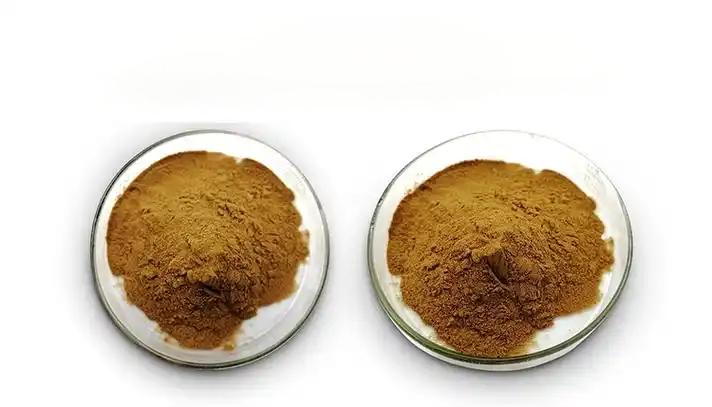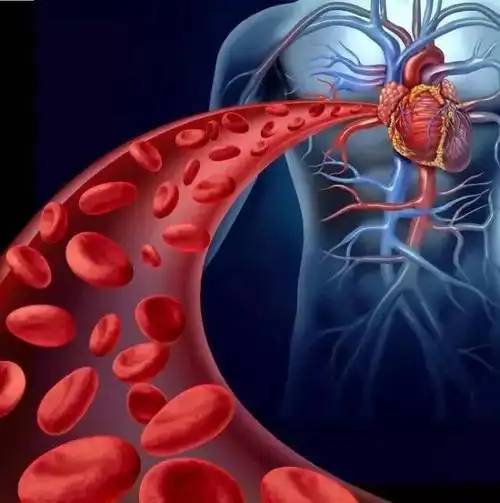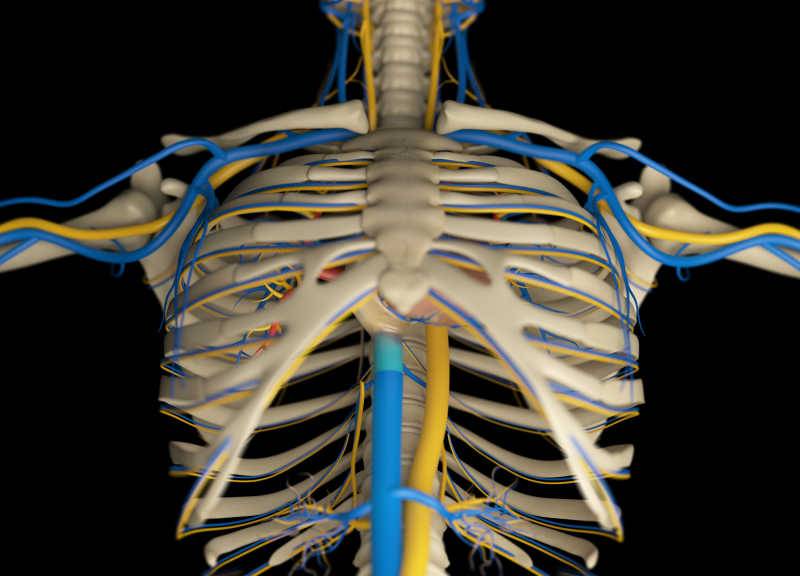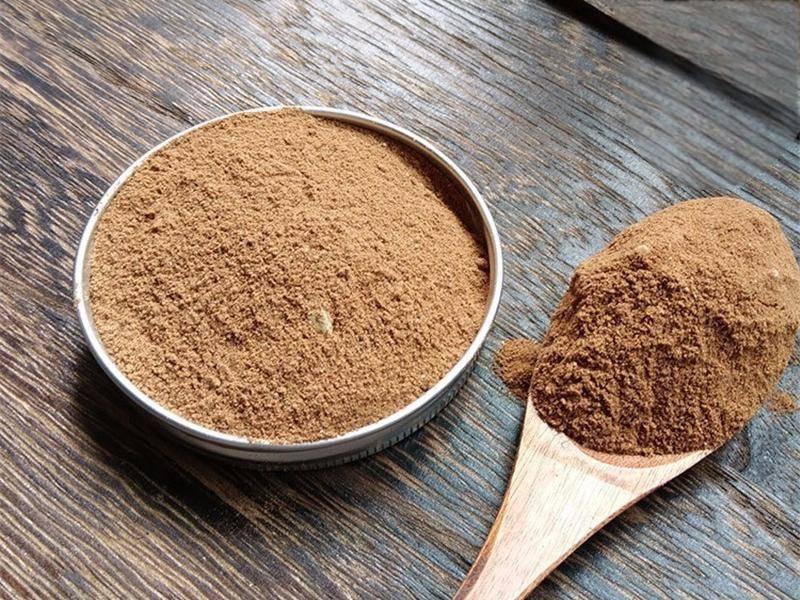What Is the Use of Epimedium Extract Icariin?
Epimedium is the dried above-ground part of Epimedium sagittatum, Epimedium brevicornum, Epimedium sagittatum var. japonicum, Epimedium pubescens and Epimedium wushanense. It is a traditional Chinese tonic herb that has been recorded in ancient herbal medicine books. Li Shizhen described it in Compendium of Materia Medica as “pungent and warm, non-toxic, strengthens the muscles and bones, nourishes the essence and vital energy, strengthens the waist and knees, and strengthens the heart and mind”. It is mainly used to treat “husband with no children due to complete Yang deficiency, senile dementia, forgetfulness in middle age, limb numbness, and hemiplegia”. However, its clinical application currently far exceeds the scope discussed by the ancients, and it is used to treat coronary heart disease, hypertension, aplastic anemia, bronchitis, neurasthenia, chronic hepatitis, etc., all of which have a certain effect. The author hereby summarizes the current research status as follows.
1 Chemical composition of Epimedium plants
There are currently 74 reported chemical components in Epimedium plants, mainly flavonoids, followed by polysaccharides, lignans, phenyl glycosides, iridoids, sesquiterpenes, phenylethanoids, and alkaloids [1]. In addition, carotenoids, hydroxybenzoic acid, 2,4-dihydroxybenzoic acid, iso-licoricidin, glycyrrhizin, astragaloside, kaempferol, 2-hydroxy-3,4,6,7-tetramethoxy-9,10-dihydrophenanthrene, luteolin, emodin, 3-hydroxy-2-methyl-pyronone[2], as well as volatile oil, tridecyl alcohol, phytosterol, palmitic acid, stearic acid, linolenic acid, ginkgolide, glucose and fructose, etc.[3].

2 Pharmacological effects of flavonoids in Epimedium
2. 1 Effects on the cardiovascular system
Icaris flavonoids (TFE) can selectively block β1-receptors in isolated and intact animal heart muscle, and have no blocking effect on β2-receptors in the trachea and α-receptors in vascular smooth muscle. Clinically, it can be used to treat coronary heart disease, angina pectoris and other diseases [4]. Icaris has a slow but long-lasting cardiotonic effect, and does not cause arrhythmia in the heart muscle. Intravenous administration of 60 and 120 mg/kg of Korean TFE can antagonize barium chloride- and aconitine-induced arrhythmias in rats and epinephrine-induced arrhythmias in guinea pigs [5]. Icariin (ICA) can significantly inhibit myocardial contractility (especially the rate of increase in ventricular pressure), reduces myocardial oxygen consumption, while significantly shortening the pre-ejection period of the ventricle. Under conditions of decreased intraventricular pressure, the left ventricular ejection period remains unchanged, while the isovolumic contraction period is shortened, reflecting a decrease in total peripheral resistance. This causes a decrease in arterial blood pressure, while also causing a significant increase in pulse pressure and the difference between systolic and diastolic pressures, reflecting a decrease in peripheral resistance and a reduction in cardiac afterload, which is particularly beneficial for coronary heart disease patients with hypertension [6].
The excessive proliferation of vascular smooth muscle cells (VSMC) can easily lead to atherosclerosis and hypertension. Puerarin and Icariin have a significant synergistic effect on the pro-apoptotic effect of interleukin-1 (L-1) on VSMC stimulated proliferation, which is not greatly affected by concentration and is positively correlated with time [7]. Both TFE and Icariin intravenous infusion can significantly increase cerebral blood flow and and reduce cerebral vascular resistance [8]. Icariin can directly dilate vascular smooth muscle and cerebral blood vessels, increase cerebral blood flow, and reduce cerebral vascular resistance. Its effect is weaker than papaverine, but its effect lasts longer than papaverine [9]. Wang Min et al. [10] found that the mechanism is to inhibit the inward flow of CA2+ in vascular smooth muscle. It has also been reported that serum containing icariin extract can promote the release of NO from human umbilical vein endothelial cells [11].

2. 2 Effects on the blood system
Systemic administration of TFE can significantly inhibit in vitro thrombosis in rabbits, reduce red blood cell aggregation and blood viscosity, and has no effect on platelet aggregation, platelet adhesion, bleeding or clotting time. Explanation: TFE has no significant effect on platelet function in terms of changing blood rheology. Its efficacy in treating cardiovascular disease is mainly achieved by reducing blood viscosity, inhibiting in vitro thrombosis, facilitating the elimination of blood stasis and preventing its formation [12]. Further research has shown that icariin can promote the fibrinolytic effect of mouse macrophages and increase plasminogen activator activity [13]. therefore, it not only prevents stroke, but also has a certain blood pressure lowering effect [13]. ICA can promote the production of colony stimulating factor C (SF) like activity in mouse spleen lymphocytes in vitro. CSF is a class of glycoproteins that promote the proliferation, differentiation, maturation and survival of human or animal bone marrow cells. It can promote hematopoiesis in the body and stimulate the function of mature cells, which is important for the body's hematopoietic function [14]. Zhao Yong et al. [15] also found that Icariin can synergistically induce IL-2, 3, and 6, and IL-6 can synergistically support the proliferation of pluripotent stem cells with IL-3, thereby promoting hematopoietic function.
2.3 Effect on the immune system
TFE has a significant enhancing effect on both human T cell immunity and B cell immunity [16], and can antagonize the inhibition of IL-2 and natural killer (NK) cell activity in a mouse model by hydroxyurea [17]. TFE 400 mg/kg can significantly enhance the phagocytic function of normal monocytes and macrophages, increase the antibody production level of serum hemolysin, and has no significant effect on delayed hypersensitivity. Further studies have shown that the immunomodulatory effect of TFE is related to its regulation of the TH/TS ratio, suggesting a bidirectional regulatory effect [18]. Li Shutong et al. [14] found that Icariin significantly promoted the proliferation of mouse splenocytes induced by Con A and produced CSF-like activity in a dose-dependent manner in the range of 0.001 to 10 μg/mL. suggesting that ICA may have an immunostimulatory effect by enhancing T cell function through the production of CSF-like activity. ICA and its intestinal bacterial metabolites icariin and icariside I promote the production of IL-8 and have a significant inhibitory effect on the production of IL-1α. and procyanidins inhibit the production of tumor necrosis factor T (NF-α) [19].
2. 4 Antitumor effect
Lin Xin et al. [20] found that icariin “inhibits human nasopharyngeal carcinoma and oral epithelial carcinoma K(B) cells to the greatest extent, with an inhibition rate of 89.7%, followed by human red leukemia K562 cells, with an inhibition rate of 78.2%, and 59.6% for promyelocytic leukemia (HL)-60 cells.
Icariin can induce the proliferation of various tumor cell lines in vitro and induce the differentiation of human acute promyelocytic leukemia cells along the granulocytic line. It has typical morphological and biochemical characteristics of apoptosis and is time- and dose-dependent [21].
Studies have also found that
(1) Icariin can down-regulate the mRNA and protein expression levels of the apoptosis-related genes bcl-2 and c-myc, which may be one of the mechanisms by which it induces apoptosis in tumor cells [21].
2) Inhibits telomerase activity in tumor cells, and has a synergistic effect when used in combination with all-trans retinoic acid. It has been reported that 90% of malignant tumor cells and tissues have high telomerase activity, while normal tissues and benign tumors do not express telomerase activity. Therefore, inhibiting telomerase activity may become a new direction in tumor treatment. Studies have found that ICA may inhibit telomerase activity in tumor cells through a cascade of gene-protein-cell effects [22].
(3) Reversing the immunosuppressive effect of transforming growth factor β2 (TGF-β2). TGF-β is the most potent immunosuppressive factor commonly found in the tumor microenvironment. It strongly inhibits the proliferation of T cells and the cytotoxic lymphocytes C (TL), NK, lymphokine-activated killer cells L (AK), CD3AK, tumor-infiltrating lymphocytes T (IL), and Mφ cells. It is directly related to the poor efficacy of adoptive immunotherapy. The mechanism by which Icariin reverses the immunosuppressive effect of TGF-β2: on the one hand, it can inhibit the protein and mRNA expression of TGF-β2 in human lung adenocarcinoma cells; on the other hand, can reverse the killing activity of LAK and CD3AK cells inhibited by TGF-β2, and can partially restore the expression of IL-2Rα on the surface of LAK cells and the mRNA level of perforin in CD3AK cells, as well as the proliferative activity of CD3AK cells, which are inhibited by TGF-β2 [23].
(4) Inhibits tumor cell metastasis. Icariin can reduce the adhesion of highly metastatic human lung giant cell adenocarcinoma cells (PG) to the extracellular matrix and their invasive motility, and reduce the expression of the PG cell surface adhesion molecule CD44V6, laminin receptor (LN-R) and intracellular CK18. ICA can downregulate the T-lymphoma invasion protein (TIam-1), c-myc gene mRNA levels, affect the organization of the cell skeleton, and reduce the expression of CK18 in the cytoplasm. At the same time, it upregulates the mRNA level of the metastasis suppressor gene Nm23, promotes the polymerization of microtubules and the formation of spindles, and suppresses the cell's ability to move [24].
(5) Increase the antigenicity of tumor cells. Icariin can increase the fluidity of the cell membrane of human lung giant cell adenocarcinoma cells, increase the expression of MHC-1 class antigens on the membrane surface, and increase the antigenicity of tumor cells, thereby inducing the body's anti-tumor immune response [25].
(6) Enhances the activity of immune cells. Icariin can enhance the killing activity of NK cells and LAK cells, and has the effect of inducing IL-2, 3, and 6 [15, 26].
2. 5 Effects on the skeletal system
Wang Junqin et al. [27] reported that Icariin has a proliferative effect on osteoblasts, with the strongest effect at a mass concentration of 10 ng/mL. Icariincan significantly inhibit the activity of FGH in early osteoblast differentiation and significantly promote the activity of FGH in late osteoblast differentiation. Icariin promotes osteoblast proliferation while also increasing osteoblast activity. TFE at 1 to 10 μg/mL has a significant effect of promoting osteoblast proliferation, i.e., increasing the number of mineralized nodules formed [28]. Ma Huiping [29] used the model of rat osteoporosis caused by retinoic acid gavage to investigate the changes in biochemical indicators of bone metabolism during the prevention and treatment of experimental osteoporosis in rats by TFE. It was found that after rats were given TFE orally, the levels of testosterone, estradiol and osteocalcin increased significantly; the levels of Ca, P, urinary deoxypyridinol and serum parathyroid hormone in the urine were lower than those in the model group; the calcium, phosphorus and bone density of the femur increased, approaching the normal control group, and the difference with the model group was significant.

2. 6 Effects on the reproductive and endocrine systems
Icariin can increase the weight of the mouse epididymis and seminal vesicles. In vitro experiments have shown that Icariin can significantly promote the basal secretion of testosterone by rat testicular interstitial cells [30]. Icariin3 (0–1000 μg/L) has a direct stimulating effect on follicular granulosa cells secreting estradiol, and also promotes the secretion of corticosterone by adrenal cortical hormones at very high doses [31].
2. 7 Anti-inflammatory effect
TFE has a significant inhibitory effect on ear swelling caused by croton oil in mice, increased capillary permeability in the abdominal cavity of mice caused by acetic acid, foot swelling caused by carrageenan in mice, and granulation tissue hyperplasia caused by croton oil. Preliminary studies have shown that TFE can significantly reduce the content of prostaglandin E and propylene glycol in inflammatory exudates, and it also has an inhibitory effect on ear swelling in adrenalectomized mice. It has no significant effect on the weight of the adrenal glands or the vitamin C content in the adrenal glands of rats [32].
2. 8 Antiviral effect
Ren Yuhao et al. [33] studied the effects of astragalus polysaccharide (APS), epimedium polysaccharide E (EPS) and TFE on cells infected with Newcastle disease virus N (DV). They found that APS and EPS had an inhibitory effect on NDV when added before the virus, while TFE had an inhibitory effect on the virus regardless of the method of administration. This suggests that they have a certain antiviral effect, which is related to their concentration.
3. Pharmacological effects of epimedium polysaccharide
3. 1. Effects on immune cells
EPS can promote the release of mature thymocytes into the periphery in a dose-dependent manner, and has a mitogenic effect on mouse lymphocytes, promoting the proliferation of T cells and B cells [34]. EPS can significantly increase the activity of NK cells in old rats, improve the phagocytic function of peritoneal macrophages in mice, and restore the phagocytic function of peritoneal macrophages damaged by cyclophosphamide in mice to normal [35].
3. 2 Effect on cytokines
EPS 100 mg/kg has the effect of inducing interferon (INF), which can significantly increase the ability of mouse thymus and spleen cells to produce IL-2 [36].
3. 3 Effect on the hematopoietic system
EPS can reverse the side effects of the anti-AIDS drug azidothymidine, such as a decrease in the number of peripheral blood leukocytes, bone marrow hematopoietic stem cells and granulocyte-monocytic progenitor cells, and a decrease in the proliferation of splenic lymphocytes and their ability to produce IL-2. EPS can also increase the proliferation of bone marrow cells and the rate of DNA synthesis in mice with “yang deficiency” caused by hydroxyurea [37].
3. 4 Effects on the endocrine system
EPS can increase the physique of old rats, significantly increase the hypothalamus and cortical β-endorphin content and the activity of IL-2 and NK cells in old rats, and weakly increase the content of testosterone, luteinizing hormone and estradiol E(2), resulting in a decrease in the E2/T ratio [38].
4 Conclusion
Current research on Epimedium has focused on discovering new compounds, studying the pharmacological aspects of EPS, TFE and Icariin, while the activity determination of newly discovered compounds has not been done enough, and structural modification of effective monomers in Epimedium has not been reported.
References:
[ 1] Li Wenkui, Zhang Ruyi, Xiao Peigen. Research progress on the medicinal plants of Epimedium [J]. Foreign Medicine · Botanical Volume, 1993, 8 (): 147.
[2] Lin Xin, Li Wenkui, Xiao Peigen. New developments in research on Epimedium [J]. Chinese Journal of Pharmacy, 1997, 32 (8): 449.
[3] Liu Xinshun, Yang Bin. Chemical constituents of Epimedium plants [J]. Chinese Herbal Medicine, 1990, 21: 36.
[4] Xu Lianzhi, Chen Weining. Study on the blocking effect of Icaris total flavonoids on adrenergic receptors [J]. Chinese Pharmacology Bulletin, 1994, 10): 311.
[5] Liu Shouyi, Zhang Tiehua, Sun Shuping. Experimental study on the antiarrhythmic effect of Icaris total flavonoid glycosides [J]. Traditional Chinese Medicine Pharmacology and Clinical, 1998, 14): 16.
[6] Liu Chongming, Yu Qinghai, Zhang Limin. The effect of icariin on the heart. Traditional Chinese Medicine, 1982, 13): 30.
[7] Wang Wei, Zhang Tao, Zhao Mingjing, et al. Interaction of 5 Chinese herbal medicine flavonoids on apoptosis of vascular smooth muscle cells [J]. Journal of Beijing University of Traditional Chinese Medicine, 2000, 23 (): 18.
[8] Liu Chongming, Wang Min, Liang Lichun. Effect of Epimedium on cerebral blood flow and cerebral ischemia [J]. Journal of Shenyang Pharmaceutical College, 1995, 12): 192.
[9] Wang Min, Liu Chongming, Zhang Baofeng. Research on the expansion of cerebral blood vessels by icariin [J]. Journal of Shenyang Pharmaceutical College, 1991, 8): 272.
[10] Wang Min, Liu Chongming, Zhang Baofeng. The effect of icariin on vascular smooth muscle [J]. Journal of Shenyang Pharmaceutical College, 1993, 10): 185.
[11] Xu Yao, Bian Guowu, Wu Minliu, et al. The effect of icariin extract on the release of NO by endothelial cells [J]. New Chinese Medicine and Clinical Pharmacology, 2001, 12 (1): 38.
[12] Gao Qiming, Yuan Bingxiang, Zhao Suzhen. Effect of Icaris flavonoids on blood rheology indices in rabbits [J]. Journal of Xi'an Medical University, 1992, 13 (): 223.
[13] Shan Yuqing, Yin Zhizhang, Xu Jin. Effects of Icaris flavonoids on the fibrinolytic system and sudden death in mice [J]. Journal of the Chinese Academy of Medical Sciences, 1992, 12(14): 419.
[14] Li Shutong, Li Tiejun, Zheng Qinyue, et al. Effects of icariin on proliferation of mouse splenocytes in vitro and on colony-stimulating factor-like activity [J]. Journal of the Second Military Medical University, 1995, 16(1): 340.
[15] Zhao Yong, Cui Zhengyan, Zhang Ling, et al. Research on the synergistic induction of IL-2, 3, and 6 by icariin [J]. Chinese Journal of Immunology, 1996, 12(1): 43.
[16] Yao Yumei. Clinical study on the effects of Icaris flavonoids on the immune and adrenal functions of the elderly [J]. Gansu Medicine, 1993, 12 (1): 135.
[17] Sun Yi, Wang Jingming, Luo Yongzhen. An experimental study on the promotion of IL-2 and NK activity in mice with immunodeficiency by epimedium total flavonoids [J]. 2002, 33 (): 635.
[18] Zhang Yifan, Yu Qinghai. Immunomodulatory effects of epimedium total flavonoids [J]. Journal of Shenyang Pharmaceutical University, 1999, 16 (): 182.
[19] Liu Tiehan, Wang Benxiang, Wang Yi, et al. Study on the intestinal bacterial metabolism of icariin I. Metabolic transformation of icariin by intestinal bacteria [J]. Chinese Herbal Medicine, 2000, 31(11): 834.
[20] Lin Xin, Li Wenkui, Luo Chongnian, et al. Inhibitory effect of icariin on the proliferation of three tumor cell lines [J]. Chinese Journal of Pharmacology and Toxicology, 1997, 11): 183.
[21] Li Guixin, Zhang Ling, Wang Yun, et al. Effects of icariin on inducing apoptosis in leukemia cells and its influence on the expression of oncogenes [J]. Chinese Journal of Hematology, 2002, 23): 322.
[22] Zhang Ling, Wang Yun, Mao Haiting, et al. Research on the inhibition of tumor cell telomerase activity by icariin and its regulatory mechanism [J]. Chinese Journal of Immunology, 20002, 18 ): 191.
[ 23] Li Xiaoyan, Zhang Ling, Wang Yun, et al. Anti-tumor research on the reversal of the immunosuppressive effect of transforming growth factor β2 by icariin [J]. Chinese Journal of Cancer Biotherapy, 2000, 7 ): 127.
[24] Mao Haiting, Zhang Ling, Wang Yun, et al. Study on the inhibition of invasion and metastasis of highly metastatic human lung cancer cells by ICA and PJA in vitro [J]. Chinese Journal of Immunology, 2001, 17(1): 27.
[25] Mao Haiting, Zhang Ling, Wang Yun, et al. Effects of icariin on the cell membrane of human highly metastatic lung cancer cells [J]. Traditional Chinese Medicine, 1999, 22(1): 35.
[26] Zhao Yong, Zhang Ling, Wang Yun, et al. In vitro immunomodulatory effects of icariin [J]. Traditional Chinese Medicine, 1996, 27(11): 669.
[27] Wang Junqin, Hu Yougu, Zheng Hongjun, et al. Effect of icariin on proliferation and differentiation of osteoblast cells in vitro. Chinese Clinical Rehabilitation, 2002, 6(9): 1307-1309.
[28] Li Yong, Ji Hui, Li Ping, et al. Effects of Epimedium total flavonoids on osteoblast cells cultured in vitro [J]. Journal of China Pharmaceutical University, 2002, 33 (1): 48.
[29] Ma Huiping, Jia Zhengping, Bai Menghai, et al. Effects of Epimedium total flavonoids on biochemical indicators of experimental osteoporosis in rats [J]. Chinese Pharmacology Bulletin, 2003, 19 (): 187.
[ 30] Xiong Yuebin, Zhou Chuhua. Effects of Herba Epimedii and Semen Cuscutae extracts on male reproductive function [J]. Chinese Journal of New Drugs, 1994, 29 (): 249.
[ 31] Li Fangfang, Li Si, Lv Zhanjun, et al. Effects of icariin on the secretory function of rat follicular granulosa cells and adrenal cortical cells [J]. Chinese Journal of Traditional Chinese Medicine, 1997, 22): 499.
[32] Zhang Yifan, Yu Qinghai. Anti-inflammatory effect of icariin [J]. Journal of Shenyang Pharmaceutical University, 1999, 16): 122.
[33] Ren Yuhao, Hu Yuanliang, Liu Jiaguo, et al. Effects of astragalus polysaccharide, epimedium polysaccharide and epimedium total flavonoids on cells infected with newcastle disease virus [J]. Journal of Nanjing Agricultural University, 2001, 24 (): 1025.
[34] Guo Baolin, Luo Chongnian, Xiao Peigen, et al. Research progress of Epimedium polysaccharides [J]. Chinese Journal of Traditional Chinese Medicine, 1998, 23 (): 436.
[35] Han Bing, Yang Junshan. Overview of pharmacological studies on Epimedium [J]. Chinese Herbal Medicine, 2000, 31 (11): 873.
[36] Ding Yan, Xing Shantian, Zhou Jinhuang. Study on the effect of Icaris polysaccharide on the 3H-TdR incorporation of T and B cells and the induction of interferon in mice [J]. Chinese Journal of Immunology, 1985, 1): 42.
[37] Ding Yan, Chen Ping, Xing Shantian, et al. The antagonistic effect of Epimedium polysaccharide on the inhibition of hematopoietic and immune functions in mice by azidothymidine [J]. Chinese Journal of Pharmacology and Toxicology, 1994, 8): 203.
[38] Meng Xianli, Li Jiaya, Zhang Yi, et al. Study on the neuroendocrine immune regulatory effect of Epimedium polysaccharide on aged rats [J]. Pharmacology and Clinical of Traditional Chinese Medicine, 1998, 14): 19.


 English
English French
French Spanish
Spanish Russian
Russian Korean
Korean Japanese
Japanese




